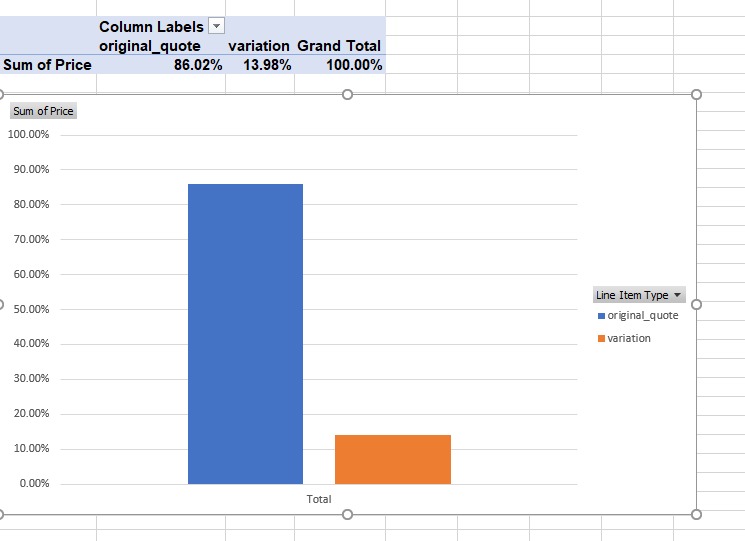How to Easily Capture Variation Work Across All your Projects
The company I work for, Tek1, undertook to do the steel work drawings for a sizable project: the West Coast Eagles Stadium. Huge variations were pending.
“Mate, just get through the work, and we’ll sort it all out at the end of the job…”
And at the end of the job? It won’t take a Conneticut man to discern he didn’t pay. Not paying was part of his business model. I later found out he’s got a reputation for being dodge. But he did have a very legitimate grievance: there was no clear and discernible way to justify all of our variations. They were buried in hundreds of emails, perhaps thousands. And then perhaps a few thousand pdfs. You need to show proof - the whole proof, and you need to get authorisation.
How you gonna do that? How you gonna manage 100s of variations across 10-15 projects at a time, across many teams? It’s a nightmare, unless you have a system? It’s impossible to dig up those complex technical details after you’ve done the job, and to package it in a way that could readily assent to, and tracked.
It was then that I determined to build a system to easily track justifications, and to document variations on a job, as we progressed. The result of that was what I call the the Quote App. The name is probably misleading.
Below are the results of its use, after a year of battle testing.
Variations on Tek1 Projects for November 2020 - November 2021
It shows Tek1 variation billing for the last year, as a percentage of total billing. Of the jobs we do, about 15% of our invoicing are variations on the original quote. The lesson to be learnt? If you don’t charge and capture those variations, that cost will come straight out of your bottom line. Most cannot afford to lose 15% like that.
We’ve only had one client refuse to pay a proposed variation (and who probably knows that it’s a legitimate one). Just one client! A few others have occasionally objected with legitimate grievances, with those issues being speedily resolved.

The app generates variation reports that allow our clients to in turn recoup those costs: extra labour, steel reports and full justifications are provided.
The benefits are two-fold:
-
it improves your profitability,
-
it allows clients to recoup their costs. (They love it).
Why bother with a system?
Why do you need this system? You have to understand the mentality of the average builder:
How Builders think
Builders typically come up with reasons not to pay (especially re: variations). e.g.
-
“Mate, I’ll pay you when I get paid”.
-
“I told my accountant to pay you, I guess he didn’t do it (AKA: not my problem)”
¯¯\(ツ)/¯¯
-
Some of the more sophisticated of them point out some foibles in the drawings. It need not be genuine, but is an example of an excuse used to hold up payment.
-
Others dump some token funds into our bank account without any remittance advice, and then use the lack of remittance as a reason to hold up payment: “Mate, I’ve already paid it, according to our records”. I say: “please send the remittance advice”. So we can reconcile things.
These tactics are de rigueur. How are you gonna cope with the above onslaught?
The Solution
Your only hope is to develop systems of documentation that are indisputable. It’s worked well for us. Log the variation, track it. Now you’re safe: you’ll likely get paid, and you’ve also got some legal bullets, in case there’s a battle.
You can roll your own system, or perhaps just use ours: Get paid, avoid the headaches, and focus on what you do best.